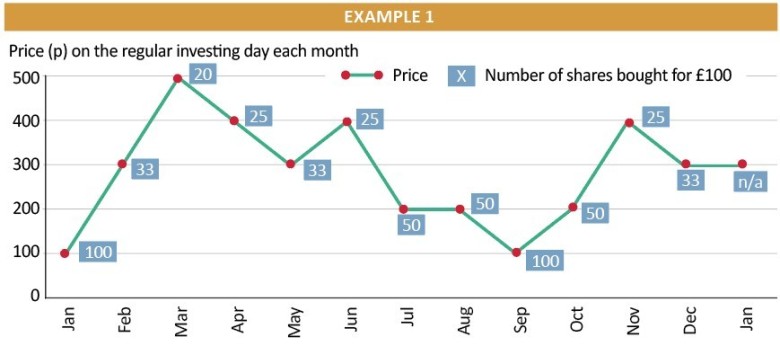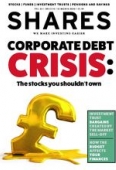Archived article
Please note that tax, investment, pension and ISA rules can change and the information and any views contained in this article may now be inaccurate.
How much should you invest?

Many people are unsure whether they have enough money to start investing. Fortunately there are only a few simple steps to follow to establish whether you are in a good position to begin putting money into the markets.
First you need to think about all of your finances and prioritise paying off expensive debt and building up an ‘emergency’ cash pot. Read more here.
Once you’ve got those things sorted you can start investing with as little as £25 a month.
You need to think about the impact of fees if you’re investing small sums, so it’s sometimes better to wait until you have a slightly larger amount.
For example, if you invest £25 and pay £1.50 to buy a fund with it, you’ve spent 6% of your initial investment just on trading fees.
That means you need to see a 6.4% return on your investment in order to get back to your original £25, let alone make a profit. However, you needn’t think that you must have £1,000 to start investing – you can start much smaller.
SHOULD I INVEST REGULARLY OR IN A LUMP SUM?
Different people choose to invest in different ways, and there’s no right answer.
Some people prefer to save up and then invest a lump sum once they’ve reached a certain amount – whether that’s £500 or £1,000, or more. Other people prefer to invest small amounts each month.
Regular investing (such as every month) can help to smooth out your returns, is a great way to get into the savings habit and can give you good discipline. But you need to be mindful of charges, as we mentioned above.
If you’re investing £50 a month and paying £9.95 in trading costs each month, you’ll rapidly use up your savings on charges.
Lots of platforms have a regular investing service, which has a cheaper price tag. For example, AJ Bell Youinvest charges £1.50 if you set up regular investing, which means a set amount of money goes into the same investment on a set date every month. Many investment platforms will allow you to start with as little as £25 or £50 a month.
KEEP INVESTING WITHOUT ANY EFFORT
A big advantage to regular investing is that you don’t have to remember to invest your cash each month, as often it can be easy to plan to invest money but forget to do so.
On top of regular investing making you more organised, it also means you have a rigid investment process that you stick to. This is important as often emotions can get in the way of investing, meaning if markets fall you could panic and decide not to buy.
Regular investors also benefit from smoother returns, thanks to something called ‘pound cost averaging’. Because you’re putting a regular amount in the market, regardless of market movements, you’ll help to smooth out your volatility. So-called pound-cost averaging means that when markets rise you are buying fewer shares or units in a fund and when they fall you’re buying more shares or units when they are cheaper.
How much time do I need to spend on investing?
It depends which investments you choose as to how much time you need to spend researching and monitoring your portfolio.
If you decide to pick individual stocks you’ll need to spend more time researching the companies initially, monitoring their financial statements and performance, and looking out for any red flags that might indicate you should sell.
Some people find the subject matter fascinating and consider investment research to be a proper hobby. You don’t necessarily need to be as committed that you spend all your spare time on research – a simple check on a regular basis may suffice.
If you pick funds then you’re outsourcing that research and monitoring to a fund manager and so can spend less time on your investments.
You still need to check the performance of the fund. You must also check that the manager is investing as you expected and whether anyone new has taken over the running of the fund. Fortunately you would only be monitoring one fund and manager, rather than lots of different stocks.
WHAT IF I’VE GOT A LUMP SUM?
If you have the money ready to invest on day one then you might be better investing it straight away, as it will benefit from having more time invested – assuming markets rise.
For example, if you have £1,200 to invest and do so in a lump sum on 1 January it will be invested for 365 days of the year. But if you break it into £100 a month and invest it on the first of each month, then the final £100 will only be invested for one month, and only £100 will be invested for 365 days.
However, this depends greatly on how markets perform when you put that lump sum in. If you invested £1,200 and then the market immediately fell, you’d likely have been better off with monthly investing.
HOW DOES THIS WORK IN PRACTICE?
To illustrate these points, we’ll run through two examples comparing lump sum versus regular investing in different market conditions.
EXAMPLE 1
The first example looks at shares in Company X which started the year at 100p and ended the year at 300p.
Investing a £1,200 lump means you could buy 1,200 shares (£1,200 / 100p). After 12 months your investment would be worth £3,600 (300p x 1,200).
If you could only afford to invest £100 a month, you would have invested the same amount after a year as the lump sum investor (£1,200) yet bought a different number of shares.
Accounting for the ups and downs of the market and the fact your £100 would buy different a number of shares almost every month, after one year you end up with 544 shares worth £1,632 (300p x 544). That is less than half if you’d invested the lump sum.
The shares saw lots of ups and downs but ended the year higher than the starting point.
EXAMPLE 2
The second example looks at Company Y whose shares started at 500p and ended the year at 200p. Investing the same £1,200 lump sum would get you 240 shares (£1,200 / 500p) if bought at the start of the year. At the end of the year they would be worth £480 (200p x 240).
Going down the regular investing route at £100 a month would mean you buy more shares for your money as the year progresses, thanks to the share price falling. You would end the year with 472 shares worth £944 (200p x 472). That’s nearly twice as much as the lump sum route.
Unfortunately no-one knows how share prices will behave in the future so it is impossible to say with accuracy which method is better.
What protection do I have?
The risk with investing is that you could lose money and if that’s as a result of an investment performing poorly you have no protection. That’s just the tough part about investing. Obviously you hope that you have more winners than losers and that overall you come out with a profit, but that’s not guaranteed.
In the worst case you could lose all your money if you invest directly in a stock that goes wrong. Just look at Thomas Cook where investors who held stock in the travel agent saw their investment become worthless.
However, you will get some protection from the Financial Services Compensation Scheme (FSCS) in certain circumstances.
If your investment platform provider goes under, you will qualify for FSCS protection worth up to £85,000 if you can’t get back the full value of your investment.
This applies per person, per authorised firm. So if an authorised firm gave you bad advice or was negligent in its management of your investments, you would be covered. But if a fund or stock in your portfolio just performed poorly you wouldn’t be covered.
Important information:
These articles are provided by Shares magazine which is published by AJ Bell Media, a part of AJ Bell. Shares is not written by AJ Bell.
Shares is provided for your general information and use and is not a personal recommendation to invest. It is not intended to be relied upon by you in making or not making any investment decisions. The investments referred to in these articles will not be suitable for all investors. If in doubt please seek appropriate independent financial advice.
Investors acting on the information in these articles do so at their own risk and AJ Bell Media and its staff do not accept liability for losses suffered by investors as a result of their investment decisions.

 magazine
magazine












